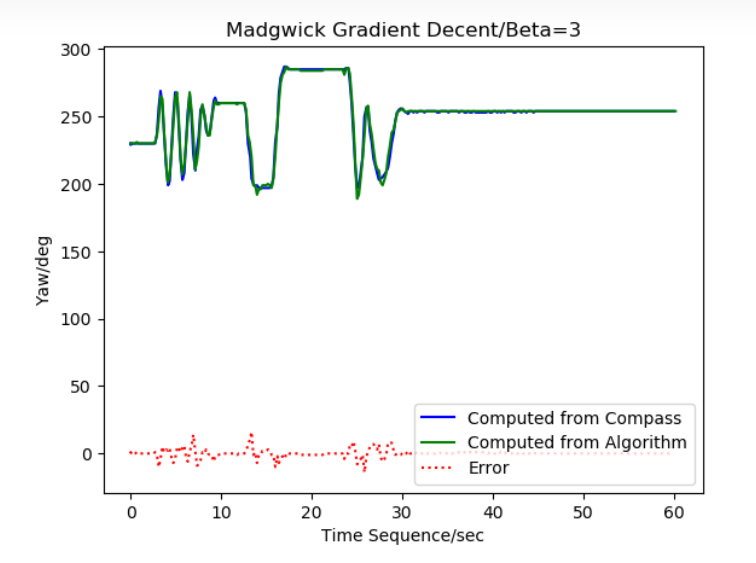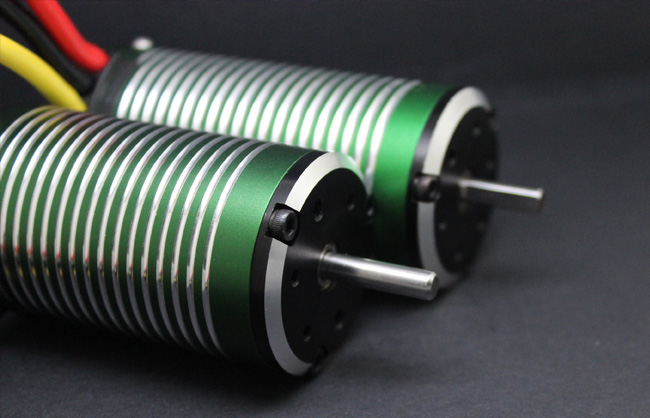INDUSTRY NEWS
About the brushless motor, you must know 44 common sense!
1. The current of a single-phase transformer at no load is out of phase with the main magnetic flux, and there is a phase angle difference aFe, because of the iron consumption current. The no-load current is a sharp top waveform because of the large third harmonic.
2. AC current also flows in the armature winding of a DC motor. However, DC current flows in the field winding. The excitation methods of DC motors include separate excitation, parallel excitation, series excitation, compound excitation and so on.
3. The back EMF expression of the DC motor is E = CE F n; and the electromagnetic torque expression is Tem = CT FI.
4. The number of parallel branches of the DC motor is always in pairs. The number of parallel branches of the AC winding is not necessarily.
5. In a DC motor, the components of a single-stack winding are connected in series in a way that one is stacked on top of the other. Whether it is a single-wave winding or a single-stack winding, the commutator piece connects all the elements in series to form a single closed loop.
6. Asynchronous motor is also called induction motor, because the rotor current of asynchronous motor is generated by electromagnetic induction.
7. When the asynchronous motor is started under reduced voltage, the starting torque decreases, and the starting torque decreases in proportion to the square of the starting current of the winding.
8. When the amplitude and frequency of the primary side voltage are unchanged, the saturation degree of the transformer core is basically the same, and the excitation reactance is also basically the same.
9. The short-circuit characteristic of the synchronous generator is a straight line, and the magnetic circuit is unsaturated when the three-phase symmetrical short-circuit occurs; when the three-phase symmetrical steady-state short-circuit, the short-circuit circuit is a purely demagnetized direct axis component.
10. The current in the excitation winding of the synchronous motor is a direct current. The excitation methods mainly include excitation generator excitation, static rectifier excitation, and rotating rectifier excitation.
11. There are no even harmonics in the three-phase composite magnetomotive force; symmetrical three-phase currents flow through the symmetrical three-phase windings, and the composite magnetomotive force does not have a multiple of 3 magnetic harmonics.
12. Three-phase transformers generally hope to have a delta connection on one side or grounding at the midpoint of one side. Because the winding connections of the three-phase transformer all hope to have the path of the third harmonic current.
13. When the symmetrical three-phase winding passes symmetrical three-phase current, the 5th harmonic in the synthesized magnetomotive force is reversed; the 7th harmonic is forward.
14. The mechanical characteristics of series-excited DC motors are relatively soft. The mechanical characteristics of separately excited DC motors are relatively hard.
15. The transformer short-circuit test can measure the leakage impedance of the transformer winding; while the no-load test can measure the excitation impedance parameters of the winding.
16. The transformation ratio of the transformer is equal to the turns ratio of the primary winding to the secondary winding. The transformation ratio of a single-phase transformer can also be expressed as the ratio of the rated voltage on the primary and secondary sides.
17. During normal excitation, the power factor of the synchronous generator is equal to 1; keep the output active power unchanged, and make the excitation current less than the normal excitation (underexcitation), the nature of the response of the direct axis armature is magnetizing; keep the output active power When the excitation current is greater than the normal excitation (overexcitation), the nature of the direct-axis armature response is demagnetization.
18. In a DC motor, iron loss mainly exists in the rotor core (armature core), because the magnetic field of the stator core is basically unchanged.
19. In a DC motor, the first pitch y1 is equal to the number of slots between the first side and the second side of the component. The composite pitch y is equal to the number of slots between the upper element sides of the two elements connected in series.
20. In a DC motor, when saturation is not considered, the characteristic of the quadrature-axis armature response is to shift the position where the magnetic field is zero, but the magnetic flux per pole remains unchanged. When the brush is located on the geometric neutral line, the armature reaction is of cross-magnetic nature.
21. In a DC motor, the component that converts external DC power into internal AC power is the commutator. The function of the commutator is to convert DC to AC (or vice versa).
22. In a synchronous motor, when the excitation flux F0 of the stator windings is at the maximum value, the back-EMF E0 reaches the minimum value. When F0 reaches zero, E0 reaches the maximum value. The phase between F0 and E0 The relationship is that F0 is 90º ahead of E0. And the relational expression between E0 and F0 is: E0 = 4.44 f N kN1F0.
23. In the motor, the leakage flux refers to only the magnetic flux of the interlinked winding itself, and the back electromotive force generated by it can often be equivalent to a leakage reactance voltage drop (or negative reactance voltage drop).
24. There are two types of rotors for asynchronous motors: squirrel cage type and winding type.
25. The slip rate s of an asynchronous motor is defined as the ratio of the difference between the synchronous speed and the rotor speed to the synchronous speed. When the asynchronous motor works in the motor state, the range of its slip rate s is 1>s>0.
26. The relationship between electromagnetic torque Tem and slip rate s of asynchronous motor Tem-s curve has three key points, namely the starting point (s = 1), the maximum electromagnetic torque point (s=sm), the synchronization point (s =0). When the rotor resistance of an asynchronous motor changes, the characteristics of the maximum electromagnetic torque Tem and the slip rate sm are: the size does not change, but the s position changes.
27. Asynchronous motors must absorb hysteresis reactive power from the grid for excitation.
28. When an alternating current is applied to a coil group, its magnetomotive force changes with time and has a pulsating nature. A single coil is energized with alternating current, and its magnetomotive force also has a pulsating property over time.
29. When a synchronous generator is connected to the grid, its three-phase terminal voltage is required to be the same as the three-phase voltage of the grid: frequency, amplitude, waveform, phase sequence (and phase), etc.
30. The rotor of a synchronous motor has two types: hidden pole and salient pole.
31. The equivalent number of phases of the squirrel cage rotor is equal to the number of slots, and the equivalent number of turns per phase is 1/2.
32. Three-phase symmetrical alternating current winding, symmetrical three-phase alternating current, its fundamental composite magnetomotive force is a circular rotating magnetomotive force, the direction of rotation is from the leading phase winding axis to the lagging phase axis, and then down An axis of the lag phase.
33. There are two connection methods between the three-phase windings of the three-phase transformer: star and delta; the magnetic circuit has two structures: group type and core type.
34. The six odd-numbered connection group numbers of the three-phase transformer are 1, 3, 5, 7, 9, and 11. The 6 even-numbered connection group numbers are 0, 2, 4, 6, 8, 10.
35. In AC windings, the number of slots per pole per phase q = q = Z/2p/m (assuming the number of slots is Z, the number of pole pairs is p, and the number of phases is m). . In AC windings, there are both 120º phase bands and 60º phase bands. Among them, the fundamental winding coefficient and back electromotive force of the 60º phase band are relatively high.
36. The symmetrical component method can be used to analyze the asymmetric operation of transformers and synchronous motors. The premise of its application is that the system is linear. Therefore, the principle of superposition can be applied to decompose the asymmetric three-phase power system into positive sequence, negative sequence, and Three symmetrical three-phase systems such as zero sequence.
37. The calculation formula of the short-distance coefficient is ky1 = sin(p/2×y1/t), and its physical meaning is that the short-distance causes the discount (or reduction) of the back-EMF (or magnetomotive force) compared with the whole-distance Coefficient). The calculation formula of the distribution coefficient is kq1 = sin(qa1 /2) / q / sin(a1 / 2), and its physical meaning is that when q coils are sequentially different by a1 electrical angle, the back EMF (or magnetomotive force) is relatively concentrated The coefficient (or discount) reduced by the situation.
38. The current transformer is used to measure current, and its secondary side cannot be open. The voltage transformer is used to measure voltage, and its secondary side cannot be short-circuited.
39. A motor is a device that converts mechanical energy into electrical energy (or vice versa), or changes one AC voltage level to another AC voltage level. From the perspective of energy conversion, motors can be divided into three categories: transformers, motors, and generators.
40. The calculation formula of the slot pitch electric angle a1 is a1 = p×360º/Z. It can be seen that the slot pitch electrical angle a1 is equal to p times the slot pitch mechanical angle am.
41. The principle of transformer winding reduction is to ensure that the magnetomotive force of the winding remains unchanged before and after the reduction, and that the active and reactive power of the winding remain unchanged.
42. The characteristic of the efficiency characteristic curve of the transformer is that there is a maximum value, that is, the maximum value is reached when the variable loss is equal to the constant loss.
43. The no-load test of the transformer is usually applied and measured on the low-voltage side. In the short-circuit test of the transformer, voltage is usually applied and measured on the high-voltage side.
44. When transformers are operated in parallel, the conditions for no-load and no circulating current are: the same transformation ratio and the same connection group number.



